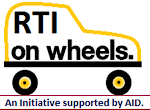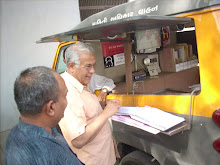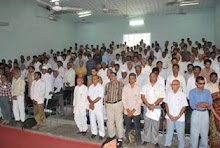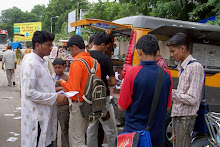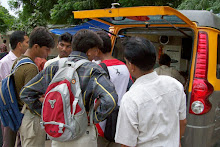Free
Press Kashmir: Srinagar: Friday, October 26, 2018.
On
December 31, 2017, J&K government announced amnesty for 5,500 “first-time
offenders” for the year 2016-2017. But it is still not clear how many have been
granted amnesty and what are the provisions or modalities under which one
qualifies for official pardon.
Ali
was elated early this year when he heard that his name was in the amnesty
recommendation list. After his amnesty was approved by the Home Department, he
had to be present for one final hearing in the district court complex, Bemina
where he was asked to sign an undertaking, promising that he will ‘not indulge
in such acts of violence again’.
For
Ali’s caged ilk, it was a “walk to freedom” after being booked for “waging war
against the state”.
The
government had announced that cases against “5,500 first time stone pelters”
would be withdrawn, subject to conditions prescribed by authorities in 2016.
These conditions, however, were never made public.
In
response to an RTI plea filed by this reporter, Home Department of J&K
government declined to provide any information regarding the number of people
who had been granted amnesty or who were awaiting to get amnesty, stating that
the information is highly confidential.
This
reporter made multiple efforts to contact the MHA, the state government and the
state police for clarity on the terms of Amnesty and on the discrepancy in the
numbers of its beneficiaries. The principal home secretary’s office said it did
not have that information.
“The
information is not available and might be available with the state government
of J&K,” the ministry of home affairs said in its response to the RTI filed
by this reporter seeking information on the number of people already granted
amnesty and those awaiting it.
As
one couldn’t access details from police department relating to individuals
booked for various offences in Srinagar district, the analysis based on the
available details showed that around 33 percent are students, one as young as
10-years-old.
The
oldest in the list is 64-years-old. Most worked as labourers, shopkeepers and
salesmen.
“Once
you look at the ground reality it becomes clear that few would benefit from
this (scheme),” said Dr. Sheikh Showkat Hussain, a noted political commentator.
“Most of those accused continue to languish in jails or have to go from one
court to another. We’ve boys who are being rounded up every time Hurriyat gives
a protest call or some VIP visits the Valley. This creates a hostile atmosphere
towards the government, hence compelling the youth to join rebel ranks.”
Due
to the “improvement” in the situation, the government had decided to grant
amnesty to the “misguided” youth who were not involved in heinous offences “so
that their career is not ruined”.
On
his visit to Srinagar in June 2018, Indian Home Minister Rajnath Singh had
stated that “10,000 first-time” stone pelters in Jammu and Kashmir had been
granted amnesty.
“The
children of Jammu and Kashmir are assets for the country,” Singh said. “We
understand that some people are misleading them into stone-pelting. Children
can make such mistakes. That’s why we decided to withdraw the cases against
those children who were involved in stone pelting. We’ve withdrawn cases
against 10,000 first-time offenders.”
The
then Director General of Police (DGP), Dr Shesh Paul Vaid had been authorised
by the government to review the cases of 2016-17. “There are cases against
5,500 people and the committee, which I am chairing, is examining them,” Vaid
had said.
However,
police records show that around 1,000 persons were “multiple-time offenders”
and did not qualify for amnesty in the first place, bringing the actual number
down to near about 4,500.
While
the fate of the rest is not clear, an RTI reply from north Kashmir’s Sopore
showed that only 57 people out of 726 have been granted amnesty from 2016- June
2018. Further, the RTI clearly reveals that there’s no single set of provision
set by authorities for granting amnesty.
The
government had earlier announced amnesty in November 2017 for 4,327 youths
involved in 744 incidents of stone pelting during 2010-2014.
“It
gives me immense satisfaction to restart the process of withdrawing FIRs
against first time offenders of stone pelting. My government had initiated the
process in May 2016 but it was unfortunately stalled due to the unrest later
that year,” the then Chief Minister, Mehbooba Mufti had tweeted. “This
confidence building measure reaffirms the Central government’s commitment
towards changing the narrative in J&K and creating a reconciliatory
atmosphere for sustained dialogue.”
On
his visit to Srinagar on May 19, 2018, Indian premier Narendra Modi also referred
to the scheme, while appealing for “peace” in the Valley.
Kashmir
Valley, however, is not new to amnesty schemes. In August 2011, former chief
minister Omar Abdullah announced amnesty for youth involved in over 1,200 cases
of stone pelting during the 2010 street uprising.
Lately,
amnesty for “first-time stone-pelters” was announced following the appointment
of Dineshwar Sharma. The former IB Chief was appointed as a special
representative in October 2017 to hold dialogue with all stakeholders in the
state.
Human
rights activists in the Valley, however, are dismissive of the latest amnesty
initiative, which was touted as a confidence-building measure.
According
to well-known Human Rights defender and chairman International Forum for
Justice, Mohammed Ahsan Untoo, the “offenders” are often booked on multiple
charges and this makes amnesty almost impossible.
“The
government of India had initiated a rehabilitation policy for surrendered
militants that proved to be a failure, so has been the amnesty scheme for first
time stone pelters,” Untoo said.
Most
of the “offenders” were charged under following sections of the Ranbir Penal
Code (RPC)147: Rioting; 148: Rioting, armed with deadly weapon; 149: Being part
of an unlawful assembly guilty of offence committed in prosecution of common
object; 152: Assault or obstruction of public servant suppressing a riot; 427:
Mischief causing damage worth Rs 50, considered minor offences; 336: Act
endangering life or personal safety of others; 307: Attempt to murder.
Handling
hundreds of such cases, a lawyer Mir Urfi believes that the amnesty process is
ambiguous in nature, as it’s not clear who’s eligible for it. “Only a small
number of people have been benefited from the scheme,” the lawyer said. “Even
if they’re acquitted in the end, the process is time consuming, hence ruining
their careers.”
Also,
there’s no clarity on a whole range of crimes under the amnesty provision. For
instance, what constitutes a “heinous crime”, which the RTI response says, will
not be considered for amnesty.
“The
cases are still going on in the courts and amnesty is only given in terms of
their release,” Mirwaiz Umar Farooq said, while criticizing the amnesty scheme.
“With daily harassment by security agencies, these boys are forced to take
extreme steps. This is just a mere PR exercise by the government.”




